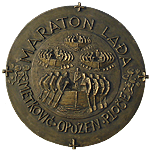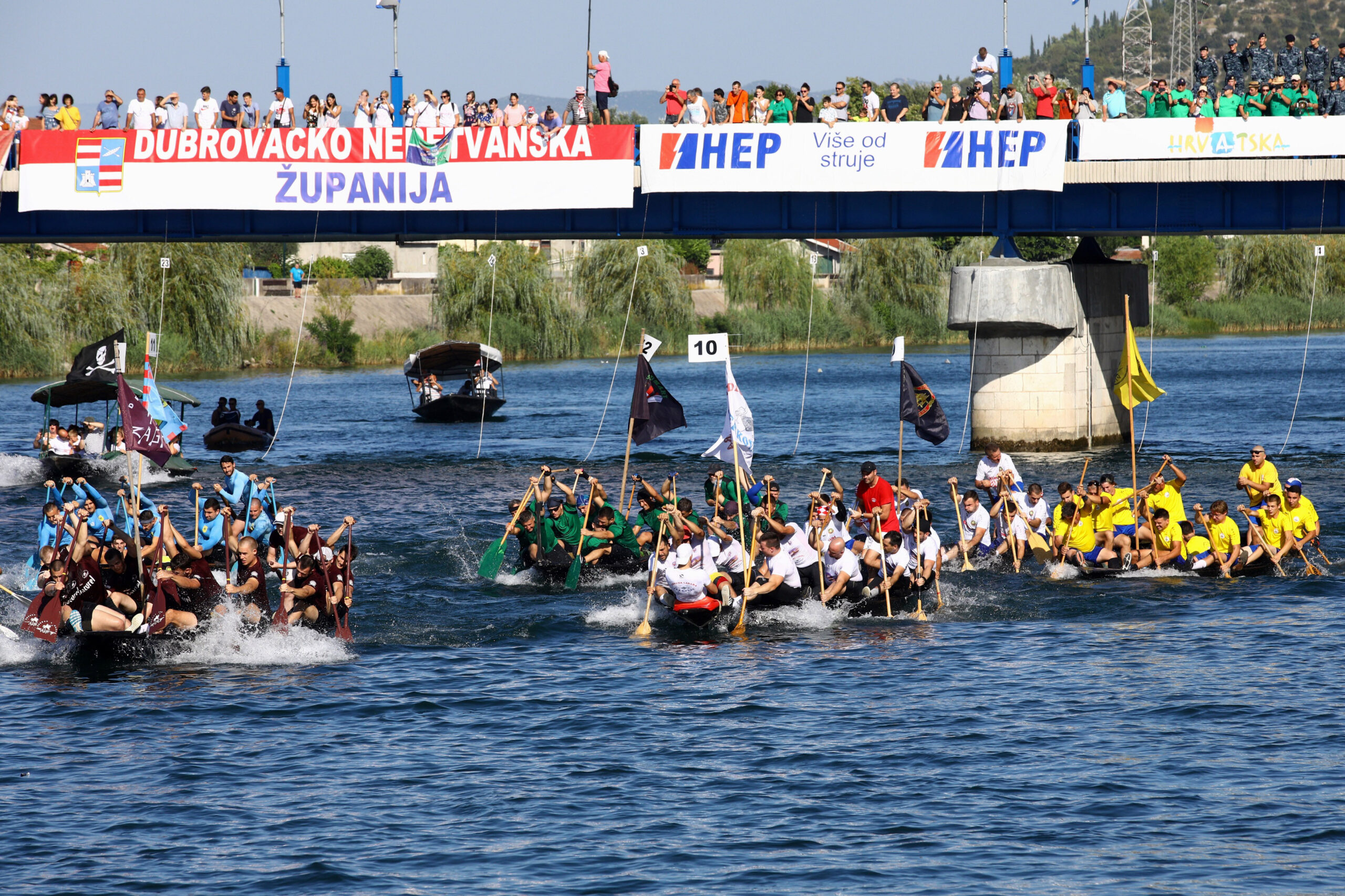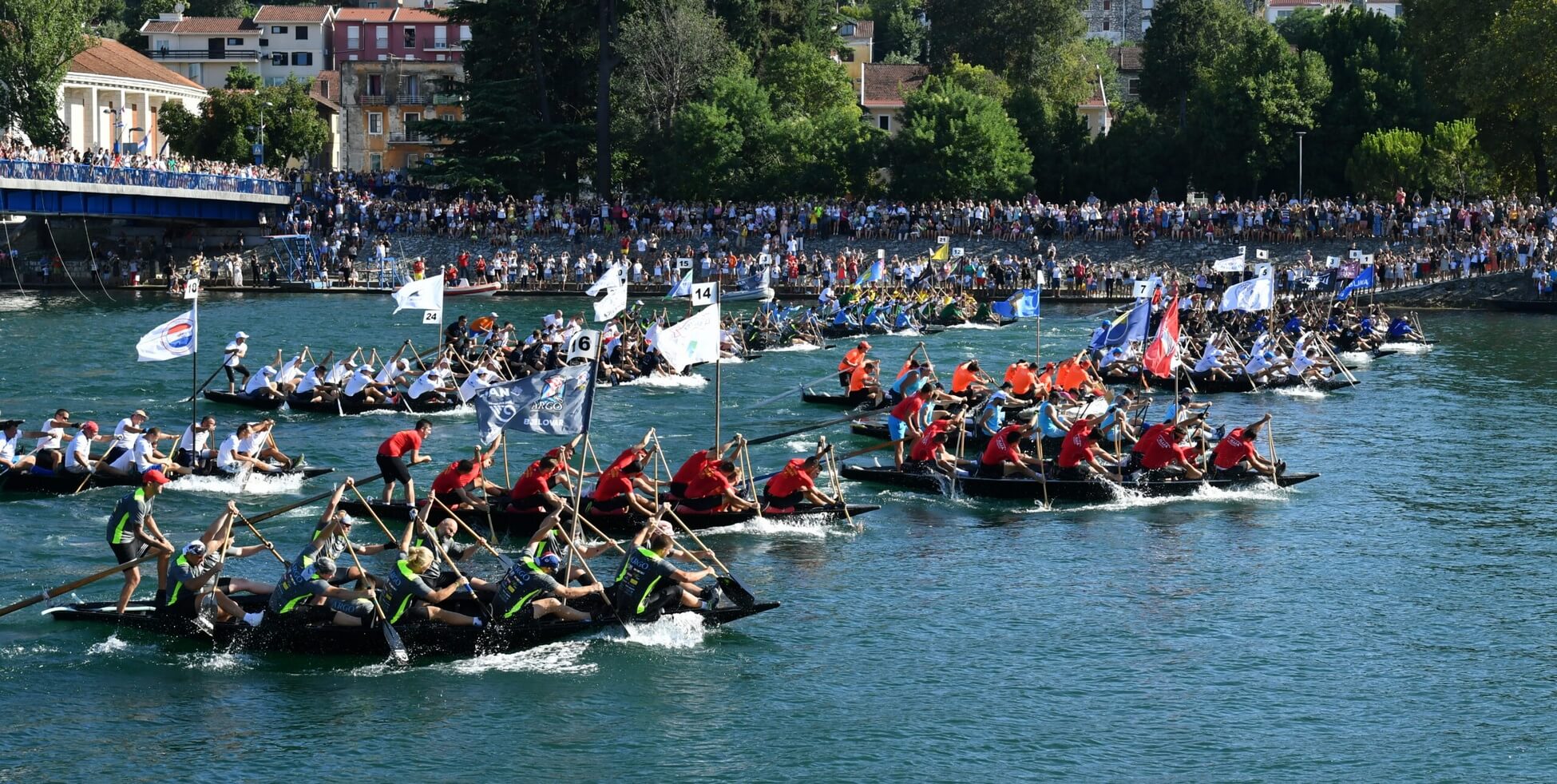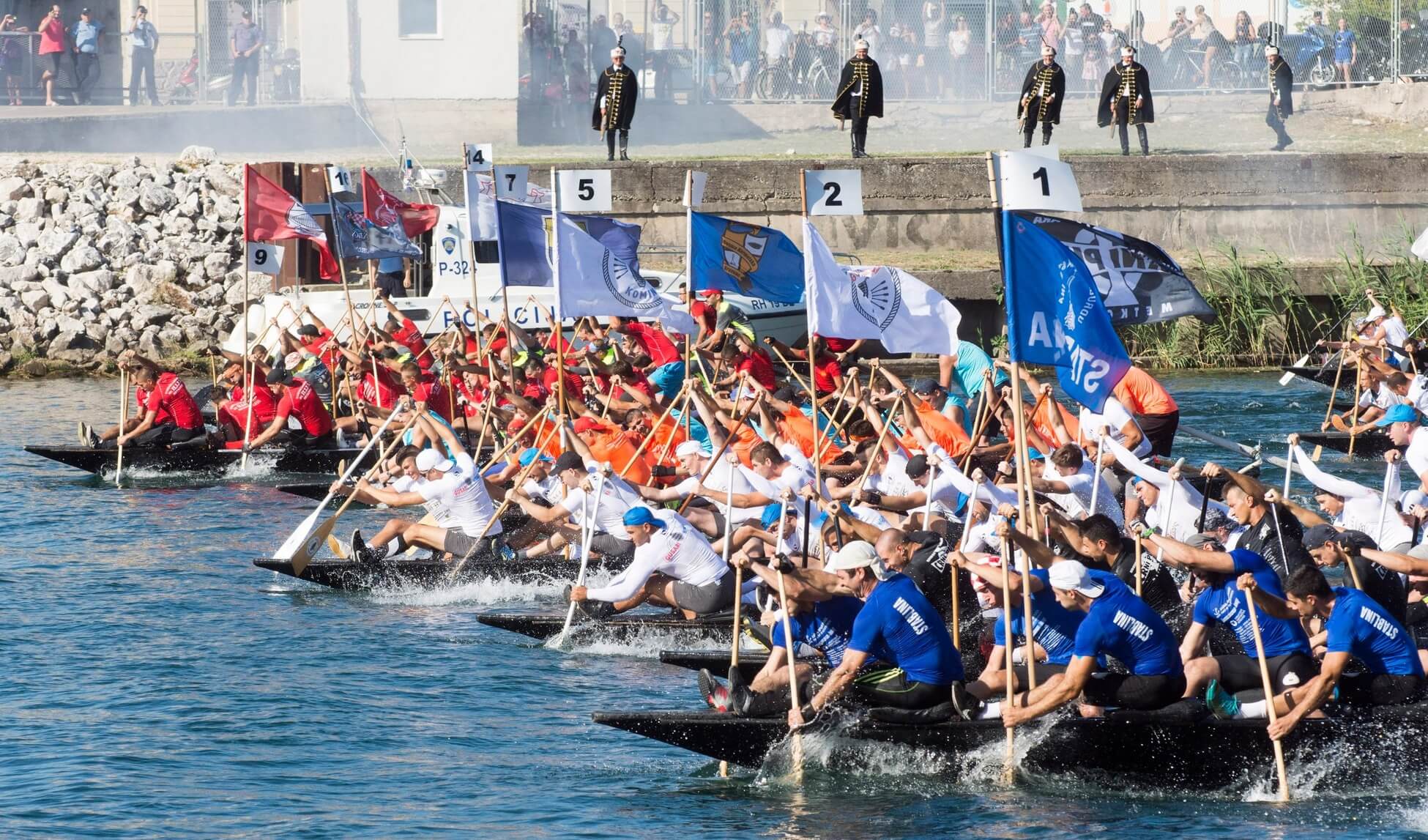INTRODUCTION 01
THE LADJA MARATHON
is an amateur sporting competition, a race of traditional, autochthonous vessels of the Neretva river valley called ladjas.
It is held once a year, on the second Saturday of August, along the route 22.500 meters long. Over 400 rowers take part in the rowing race down the Neretva river and its branches, racing from Metković to Ploče.
Over the years, the Ladja Marathon has become the largest maritime sporting event in this part of Europe and it attracts growing number of rovers and spectators every year.

The perpetual big bronze Duke Domagoj shield weighs 37 kilograms and its author is Nikola Vučković-Nidžo.
The shield is awarded to the Marathon winner.
Three consecutive Marathon titles earns a team the right to keep the shield in their permanent possession.
BY VIEWING FIGURES
BY The Ladja Marathon is one of the biggest events in Croatia, along with being a tourist spectacle and attraction. Over fifty thousand spectators follows it along the entire stretch of the route. Its most impressive and most attractive moment is definitely the start in the town of Metković, when around 400 rowers in 33 ladjas (of same specifications) in tight formation launch their vessels towards the distant finish line in Ploče to the powerful rhythm of the drums. Although the finish is far away and the route is tedious, all the teams start off as though the goal line is but a 100 meters away and keep the rhythm through the entire race.
VIEWING FIGURES 02
RULES 03
THE LADJA MARATHON START
The race starts at the Metković bridge and continues down the Neretva river towards the town of Ploče, passing through Opuzen. The crew consists of 10 rowers, a drummer and a helmsman. During the competition it is allowed to substitute (up to) 6 rowers in Opuzen, so each team counts a minimum number of 12 and a maximum number of 18 competitors.
Ladja has to have the traditional shape and its dimensions, as well as the number of ribs, must comply with those defined in the rulebook. Ladja’s hull has to be wooden, with the specified board thickness.
To secure equal conditions for all competitors the process of building new ladjas was initiated. It was completed in 2007, when 33 identical ladjas competed in the 10th anniversary edition of the Marathon. Record-breaking 41 team took part in the 2013 competition. The optimal number of ladjas for a race is 33, which is also the number of identical vessels owned by the Neretva river boatmen association. The Association provides each competing team with a ladja, while oars, rudders and seats are provided by teams. Each team is also provided with a ladja for training prior to the Marathon.
33 identical ladjas are allocated to the first 33 teams from the speed trials in Opuzen few days before the Marathon, while the remaining teams (if more than 33 teams applied) race out of the competition in roughly the same ladjas. To get a better picture of it, please refer to the sketch of a ladja with its main parts.
Oars are of traditional shape, they’re made of wood and so is the rudder, which is shaped like a longer oar. Rowers sit on the ladja’s edges and their leg must not stick out (it can be inside the vessel or positioned on its edge). Substitutions are performed on the designated place on Neretva river’s right bank, straight across Opuzen’s waterfront. If needed the drummer, positioned either in the middle of a ladja or on its bow, can substitute any of the rowers during the race. Rowers are also allowed to swap places during the race, but maximum number of 10 oars must be in the water at all times.
WINNING TEAM
is awarded gold medals, the perpetual big bronze Duke Domagoj shield, smaller shield (which goes in their permanent possession) and a money prize. The second-placed and the third-placed teams are awarded silver and bronze medals, smaller shields to keep, as well as money rewards. Prize fund for the remaining teams is determined by the organizer.
Although the original idea was to allow only those born in the Neretva river valley and descendants of emigrants from this area to compete in the Marathon, teams from other areas and countries were later granted admission in order to popularize the event. International teams that competed so far include: descendants of our emigrants from Australia (years 2000 and 2001), Croats from Italian region Molise (whose ancestors came from the Neretva valley) (from year 2002 on), team Salašari somborski from Serbia, and several teams from the neighbouring Bosnia-Herzegovina.
Marathon coverage from 2001 has been shown on Eurosport in 2003 and 2006, Croatian national television HTV produced the documentary titled “Rivalstvo što nas veže – Marathon lađa na Neretvi” (“Rivalry that binds us – The Ladja Marathon on the Neretva river), which aired in 2007, as well as the DVD-issue. In 2020 the Association secured live coverage of the Marathon on the Croatian national television, so the battle for the Duke Domagoj shield, as well as the natural beauties of the Neretva river valley, can be enjoyed every second Saturday in August Croatia- and worldwide.
 HR
HR  EN
EN 



